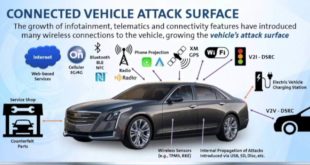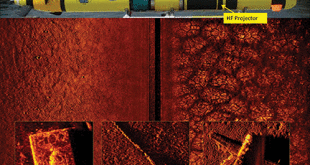Increasingly, today’s vehicles feature driver assistance technologies, such as forward collision warning, automatic emergency braking, and vehicle safety communications. In the future, the deployment of driver assistance technologies may result in avoiding crashes altogether, particularly crashes attributed to human drivers’ choices. These vehicles depend on connectivity and technology that runs …
Read More »Yearly Archives: 2020
DARPA’s SI3-CMD to enhance Military Decision Making through artificial intelligence and computational game theory
Military decision-making applications could include strategy development, course of action planning, tactical analyses, intelligence gathering, wargaming and simulation, deception detection, coalition formation and evolution, and others. Such domains typically involve extremely large search spaces (making even a single traversal of a complete decision tree impossible), private information that is never …
Read More »DARPA’s RADICS develops Rapid Attack Detection, Isolation and Characterization Systems for cyber attacks on power grids
Across the United States, 3200 separate organizations own and operate electrical infrastructure. The widely dispersed nature of the nation’s electrical grid and associated control systems has a number of advantages, including a reduced risk that any single accident or attack could create a widespread failure from which it might take …
Read More »Quantum repeater technology breakthroughs pave the way for Quantum internet—the quantum version of the current Internet
Quantum encryption using single photons is a promising technique for boosting the security of communication systems and data networks, but there are challenges in applying the method over large distances due to transmission losses. Currently Most Quantum Communication links are direct point-to-point links through telecom optical fibers and, ultimately limited to …
Read More »DARPA’s Brandeis program developing tools and techniques to protect the private the private and proprietary information of individuals and enterprises
Significant technological advances are being made across a range of fields, including information communications technology (ICT); artificial intelligence (AI), particularly in terms of machine learning and robotics; nanotechnology; space technology; biotechnology; and quantum computing. The technologies are mostly dual use, in that they can be used as much to serve …
Read More »Detonators innovating for a wireless safer & more productive blasting and EMI/EMP immune laser detonators
Energetic materials and munitions are used across DoD in mission critical applications such as rockets, missiles, ammunition, and pyrotechnic devices. In these applications, energetic materials and munitions must perform as designed to ensure success in both training and combat operations. Explosive substances are solid or liquid substances or mixtures, which …
Read More »UNMANNED VEHICLE SYSTEMS & OPERATIONS ON AIR, SEA, LAND by Professor Randall K Nichols Director, Unmanned Aircraft Systems- Cybersecurity Graduate Certificate Program
UNMANNED VEHICLE SYSTEMS & OPERATIONS ON AIR, SEA, LAND By Nichols, R. K., Ryan, J., J.C.H., Mumm, H.C., Lonstein, W.D., Carter, C., Hood, J.P, Mai, R., Shay, J., & Jackson, M. ABSTRACT Unmanned Vehicle Systems & Operations On Air, Sea, Land is our fourth textbook in a …
Read More »Synthetic Aperture Sonar on Unmanned underwater vehicle (UUVs) and AUVs is transforming Mine Countermeasures and Undersea Warfare
SOund Navigation And Ranging or SONAR is a technique of distance measuring between detector and an object base on sound reflection. The distance can be calculated from propagation time and speed of sound in specific mediums. For military, Sonars are the eyes and ears of ships or submarines in water …
Read More »New Autonomous Sense and Avoid sensor technologies enable Safe and efficient integration of Unmanned Aircraft Systems (UAS)
Safe and efficient integration of Unmanned Aircraft Systems (UAS) into Civil Airspace is a key challenge for unleashing their potential for non-military applications “without reducing existing capacity, decreasing safety, impacting current operators, or placing other airspace users or persons and property on the ground at increased risk” Sense and avoid technology …
Read More »Brain on a Chip(BOC) technologies enable drug development of Brain diseases and assess impact of biological and chemical agents on the brain of soldiers
With the advent of an aging society, the disease incidence rate is increasing, and the cost of drug development and disease treatment is expanding exponentially. According to the World Health Organization (WHO), nearly one billion people in the world suffer from neurodegenerative diseases such as Alzheimer’s (AD) and Parkinson’s diseases. …
Read More » International Defense Security & Technology Your trusted Source for News, Research and Analysis
International Defense Security & Technology Your trusted Source for News, Research and Analysis









